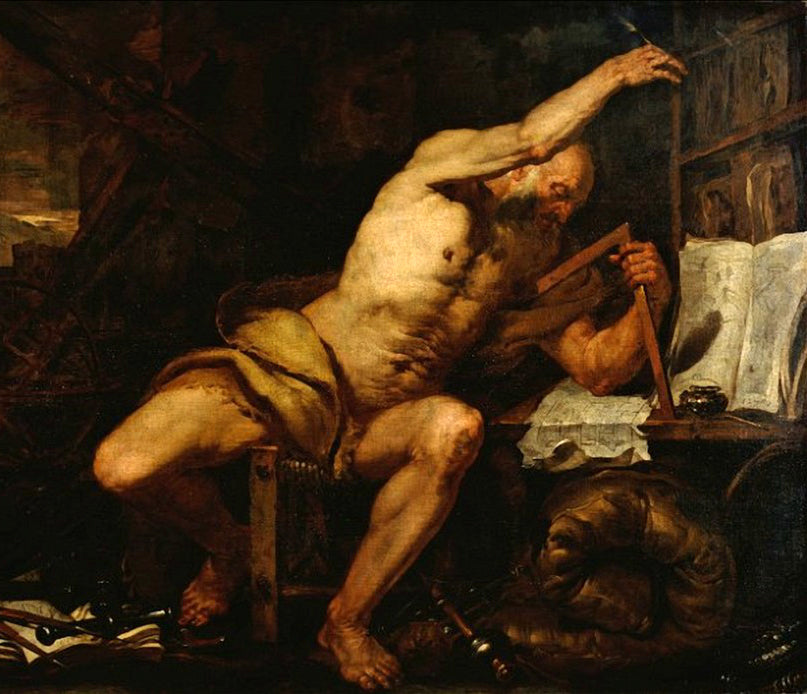Coin weights
There was a time when the actual value of a coin was not as certain as it is nowadays.
We live in a relatively stable period from that perspective. The value of the coin is no longer based on its weight and the value of the metal from which it is made.
A dollar is always worth a dollar and a euro is worth a euro...we can take currency at face value (without losing face).
Sound logical? Not necessarily.
That was a common issue in the past.

Always prove your mettle metal
Prior to the 20th century (and even later depending on the country), the weight (or rather the mass to be more precise) of a coin reigned supreme.
Furthermore, the face value of the coin often referred to the corresponding weight. For example, the pound sterling derives its name directly from the pound as a unit of weight (the origins of which go all the way back to Ancient Rome). The same was true of the Mark, which was descended from the Cologne mark, itself a descendant of the Carolingian pound...
Coin Great Britain
Elizabeth, Pound, 1558-1603, London, Very rare, AU(55-58)
The millesimal fineness of a coin indicates its precious metal content. For example, the Canadian Silver Maple Leaf has a millesimal fineness of 999.9 thousandths, meaning it is made of almost pure silver.
Coin Canada
Elizabeth II, 5 Dollars, 1996, Royal Canadian Mint, Ottawa, BU
There were thus two parameters required to validate the value of an exchanged coin: its fineness (purity of the metal or alloy) and its weight.
Two parameters not always easy to verify in days long gone by.
Between devaluations, revaluations, royal decrees from all countries, fraudulent practices, counterfeiting, wear, artisanal minting, foreign currencies, differences in mass standards, and the list goes on, it was difficult for a merchant to accept a coin with confidence for what it was worth at first sight.

Ancient practices
This quest for precision goes back to very ancient times, with methods that are sometimes ingenious and often rudimentary.
Various techniques were practiced during antiquity to determine the fineness.
First, the density was checked (thanks, Archimedes!) by immersing the tested coin and a reference object in a receptacle filled with water. The volumes of water that overflowed were then compared.
Touchstones were also used for assaying and remained popular until the 19th century. This technique consists in comparing a chemical reaction between a sample (the touchstone) and the coin being tested.
Weighing was far simpler, and there is evidence that the first scales and balances were used to weigh gold ingots in ancient Egypt around 2400 BC.
A question of weight
In France, the coin weight (known as a dénéral) appeared around AD 1330 under Philip VI and was initially employed to check the weight of issued coins.
Generally, the coins which left mints were slightly heavier – quite deliberately – in order to allow for wear (in other words, the natural abrasive effect of use on the metal).
The coin weight was made from a metal far less precious than the coins (copper, iron, brass). Only its mass counted. And it had to be exact.
Each coin had a corresponding coin weight.

From an aesthetic perspective, the finish is variable. Some are struck on both sides, whereas others are not. Some bear a motif, others a simple inscription often mentioning the equivalent weight of the face value in question. In other words, this object, which was all in all very utilitarian in its time and has since become collectible, is found in great variety.
It all hangs in the balance
It was in the 16th century with the proliferation of commercial exchanges and currency circulation that the use of the weighing box became popular.
At the time, it was a sort of kit containing a balance (set of scales) dedicated to this use and an assortment of reference coin weights.

Numerous workshops across Europe set to work manufacturing these indispensable objects. From Antwerp to Birmingham via Cologne and Lyons, people weighed and weighed as much as they could, checking, evaluating, and comparing, each using their own system of reference units.
It should be mentioned that at that time certain unscrupulous individuals had the devious habit of clipping the edges of coins and gathering the precious metal shavings. This decreased the coins’ value.
Another technique, this time quite simply dishonest, was to stuff the coin with a cheaper metal like an Oreo and add a thin coat of gold or silver as a trompe l’oeil.
(It must be noted that these people were playing with fire, as the practice was severely punished in the Middle Ages. The counterfeiter was condemned to die a terrible death, boiled in a pot of water or pitch in public).

No one will ever know?
Not really! Every savvy merchant equipped himself with a weighing box to protect himself. At the slightest suspicion, he set down his scales, selected the reference weight from the box, placed it in one of the pans and added the coin to the other.
If the scale tilted in favor of the coin, the transaction could take place. If the opposite was true, weights of grain were added until the balance was reached and said grains deducted to give the coin its real value.
However, if the suspicion remained, the perspicacious seller could employ the older and admittedly somewhat less scientific technique of dropping the coin on a hard surface and listening to the sound it made. A clear sound indicated high-quality metal.
Incidentally, the combination of these two techniques, the weighing with the scales (trébuchet) and the clarity of the sound (son) when dropped, gave us the popular French expression “en monnaie sonnante et trébuchante”, which translates as cold, harsh cash – in other words: real money.
Elsewhere in the world...
Of course, the use of reference weights was not confined to Europe.
In West Africa, for example, we find gold weights designed by the Akans between the 15th and 19th centuries.
Made of brass, these Baoulé weights or “mrammou” were used to determine the mass of gold dust, a precious dust which was used in the region for commercial exchanges at that time.
Coin West Africa
Ashanti, Akan Goldweight, XVIIIth-XIXth Century, AU(50-53)
Coin West Africa
Ashanti, Akan Goldweight, XVIIIth-XIXth Century, AU(50-53)
Translation: Michael Wright
Iconography :
- "Archimède" by Giovan Battista Langetti (between 1665 and 1670) (Public domain)
- "Une dame âgée pesant de l'or" by Jacques de l'Ange (1642) (Public domain)
- Weighing box with 21 weights and a balance, circa 1650, made by André Le Fran, Musée des Arts et Métier in Paris (Creative Commons)
- "Un homme âgé pesant des pièces de monnaie" by Salomon Koninck (between 1629 and 1656) (Public domain)
Sources :
- https://www.e-periodica.ch/cntmng?pid=smb-001:1963:13::984
- https://fr.wikipedia.org/wiki/Titre_(m%C3%A9tal)
- https://fr.wikipedia.org/wiki/Marc_(unit%C3%A9)
- http://numisclub.beauvais.free.fr/pesage.htm
- http://poidsmonetaires.over-blog.com/article-les-poids-monetaires-un-peu-d-histoire-59000097.html
- https://www.lepoint.fr/economie/les-faux-monnayeurs-13-12-2011-1406931_28.php






















